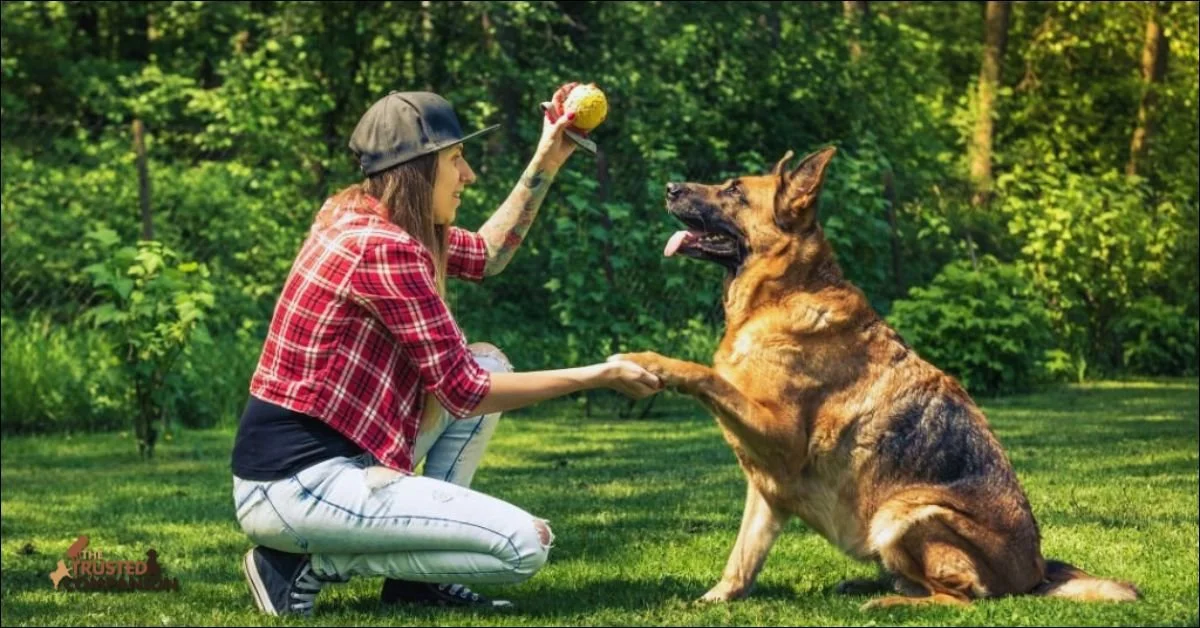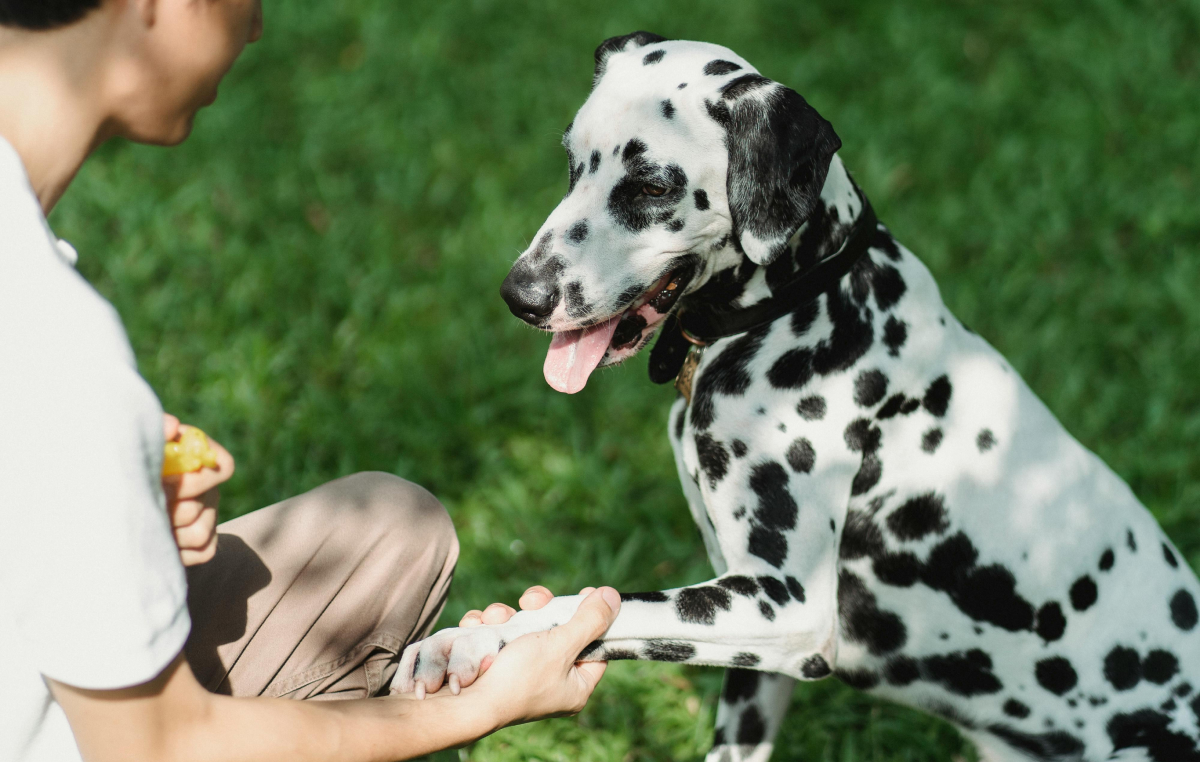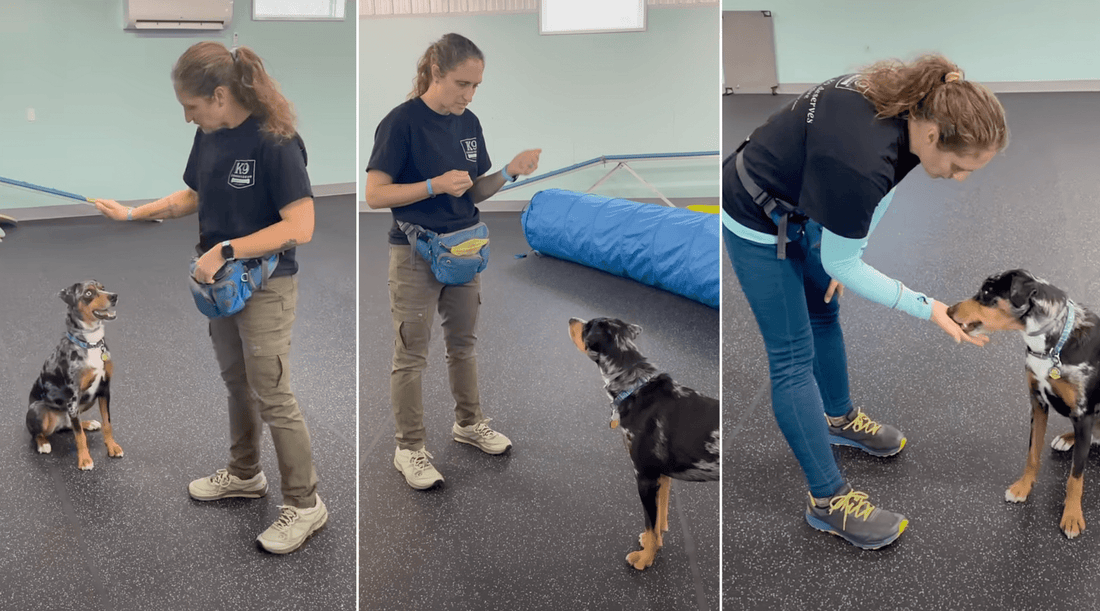Have you ever wondered what dog obedience training really teaches your furry friend? It’s more than just sit, stay, or come when called.
This training builds a strong bond between you and your dog, making daily life easier and more enjoyable. Imagine having a dog that listens without hesitation, behaves well around others, and stays safe in any situation. If you want to unlock these benefits and understand how obedience training shapes your dog’s behavior, keep reading.
You’ll discover the key lessons your dog learns and how they can transform your relationship for the better.
Basic Commands
Dog obedience training focuses on teaching basic commands. These commands are essential for communication between you and your dog. They help ensure your dog’s safety and improve behavior. Learning basic commands strengthens the bond with your furry friend.
Sit And Stay
The “Sit” command is foundational in obedience training. It teaches your dog to sit calmly on the ground. This command is useful for keeping your dog under control. Dogs learn patience and discipline through the “Stay” command. It instructs them to remain in one place until released. This is valuable in busy places or during meals.
Come When Called
“Come” is a crucial command for safety. It ensures your dog returns to you when called. This command is vital in open areas or crowded spaces. Training your dog to come builds trust and responsiveness. Rewarding your dog for coming enhances positive reinforcement.
Heel Walking
“Heel” teaches your dog to walk beside you on a leash. It prevents pulling and promotes a pleasant walking experience. This command is essential for urban environments. Heel walking improves focus and connection with your dog. Practicing heel walking makes outings enjoyable and stress-free.
Social Skills
Dog obedience training teaches important social skills. These skills help dogs behave well around others. Social skills reduce stress for dogs and people. Training guides dogs to be calm and friendly in social settings. Proper social behavior makes walks and visits more enjoyable.
Interacting With Other Dogs
Training helps dogs learn polite ways to meet other dogs. It teaches them to stay calm and not to jump or bark aggressively. Dogs learn to read body language and respond appropriately. This prevents fights and misunderstandings. Social training builds confidence and helps dogs feel safe with new friends.
Greeting People Politely
Obedience training shows dogs how to greet people calmly. Dogs learn not to jump or bark when meeting someone. They practice sitting quietly and waiting for attention. Polite greetings make visitors comfortable and welcome. This behavior also keeps dogs safe around strangers and children.
Impulse Control
Impulse control is a key part of dog obedience training that teaches your dog to pause and think before acting. It helps your dog manage their natural urges, making daily life smoother and safer. When your dog learns impulse control, they become more reliable and easier to live with.
Waiting Patiently
Teaching your dog to wait patiently can transform chaotic moments into calm ones. Whether it’s waiting at the door or before mealtime, your dog learns to hold back excitement and stay composed.
You might notice your dog jumping or barking in anticipation. Training them to “wait” turns that energy into calm focus. This skill improves their overall behavior and reduces stress for both of you.
Ignoring Distractions
Distractions are everywhere—from other dogs to tempting smells. Impulse control training helps your dog ignore these and stay focused on you.
Imagine walking your dog past a squirrel without lunging or pulling. This is the result of strong impulse control. It shows your dog respects your commands even when the world is full of distractions.
How would your daily walks change if your dog ignored every tempting distraction? Training impulse control makes that possible, creating a safer and more enjoyable experience for both of you.

Credit: www.thetrustedcompanion.com
Safety Skills
Safety skills are a crucial part of dog obedience training. They help protect your dog and give you peace of mind. Teaching your dog specific safety commands can prevent accidents and keep them out of harm’s way.
Recall In Emergencies
Recall training is teaching your dog to come to you immediately when called. Imagine your dog slipping out of the yard or running toward a busy street. A strong recall can stop your dog before danger strikes.
Practice recall regularly in different places with distractions. Use a happy, excited tone and reward your dog with treats or praise. This builds a positive connection and makes your dog eager to respond quickly.
Have you ever felt panic when your dog ran off unexpectedly? Recall skills turn that fear into confidence, knowing your dog will return safely on command.
Avoiding Dangerous Objects
Dogs explore the world with their mouths, which can lead them to dangerous objects like broken glass or toxic plants. Training your dog to “leave it” or “drop it” can save them from injury or poisoning.
Use clear, consistent commands and reward your dog when they obey. Practice with various objects to make sure your dog understands the command applies to anything harmful.
Have you noticed your dog sniffing or picking up something questionable during walks? Teaching avoidance skills helps you control those moments before they turn into emergencies.
Communication
Communication is the foundation of dog obedience training. It teaches your dog how to understand you and respond appropriately. At the same time, it helps you recognize your dog’s messages, creating a true two-way connection.
Reading Human Cues
Your dog learns to notice your body language, tone of voice, and facial expressions during training sessions. These cues tell your dog what you want without needing words. For instance, a raised hand might mean “stay,” while a calm voice can signal “good job.”
Have you ever seen your dog tilt its head or pause before reacting? This shows your dog is trying to understand your signals. You can sharpen this skill by consistently using the same gestures and sounds for commands.
Expressing Needs Clearly
Training also teaches your dog how to tell you what it needs. Instead of barking or whining randomly, your dog can learn specific ways to get your attention. This might include sitting quietly by the door when it needs to go out or bringing a toy when it wants to play.
Think about a time your dog surprised you by calmly letting you know it was hungry or wanted a break. These moments happen because your dog learned clear ways to express itself. Encouraging this clarity reduces frustration for both of you and strengthens your bond.

Credit: backyardpetservices.com
Building Trust
Building trust is the heart of dog obedience training. Trust creates a strong bond between you and your dog. It helps your dog feel safe and ready to learn. Without trust, training can become stressful and less effective. Dogs respond best when they feel loved and understood. Trust leads to cooperation and happier training sessions.
Positive Reinforcement
Positive reinforcement teaches dogs to repeat good behavior. This means rewarding your dog with treats, praise, or play. Rewards help dogs understand what you want from them. They learn quickly when training feels fun and rewarding. Avoid punishment, which can break trust and cause fear. Focus on encouraging good actions to build confidence and trust.
Consistent Routine
Dogs thrive with a consistent training routine. Regular training sessions help dogs know what to expect. Predictability makes dogs feel secure and calm. Using the same commands and gestures builds clear communication. Consistency reduces confusion and builds trust over time. A steady routine creates a strong, trusting partnership.
Problem Solving
Problem solving is a key skill that dog obedience training helps develop, not just for your dog but for you as an owner too. It teaches your dog how to navigate challenges calmly and confidently. This skill can transform daily struggles into manageable situations, improving your relationship and communication.
Overcoming Fear
Fear can stop your dog from learning new commands or behaving well in different environments. Training exposes your dog to new experiences in a controlled way, helping them face fears instead of avoiding them.
For example, a dog scared of loud noises learns to stay calm when you gently introduce those sounds during training sessions. You’ll notice your dog starts to trust you more and handles stress better. Have you ever seen your dog freeze or hide? Training can help change that reaction into curiosity and confidence.
Reducing Aggression
Aggressive behavior often comes from confusion or frustration. Obedience training teaches your dog how to communicate their needs without resorting to aggression.
Training provides clear rules and consistent responses, which reduce misunderstandings. Your dog learns what behavior is acceptable and what is not, lowering frustration levels. Imagine your dog meeting new dogs or people calmly instead of lunging or barking. This change comes from training that focuses on positive behavior and problem-solving skills.

Credit: www.koruk9.com
Frequently Asked Questions
What Skills Does Dog Obedience Training Teach?
Dog obedience training teaches basic commands like sit, stay, come, and heel. It also improves focus and impulse control, fostering better communication between you and your dog.
How Does Obedience Training Benefit My Dog’s Behavior?
Obedience training reduces unwanted behaviors such as barking, jumping, and chewing. It promotes socialization, discipline, and confidence, making your dog well-mannered and happier.
Can Obedience Training Improve My Dog’s Safety?
Yes, obedience training enhances safety by teaching recall and emergency commands. It helps prevent accidents and ensures your dog responds promptly in risky situations.
How Long Does Dog Obedience Training Usually Take?
Training duration varies but basic obedience often takes 4 to 8 weeks. Consistency and daily practice speed up learning and reinforce commands effectively.
Conclusion
Dog obedience training builds trust and clear communication. It teaches dogs to follow commands and behave well. Training helps dogs feel safe and confident. It also makes life easier for owners. Good behavior keeps dogs and people happy. Training creates a strong bond between dog and owner.
Patience and consistency bring the best results. Every dog can learn with the right approach. Teaching obedience is an important step for a happy pet.







